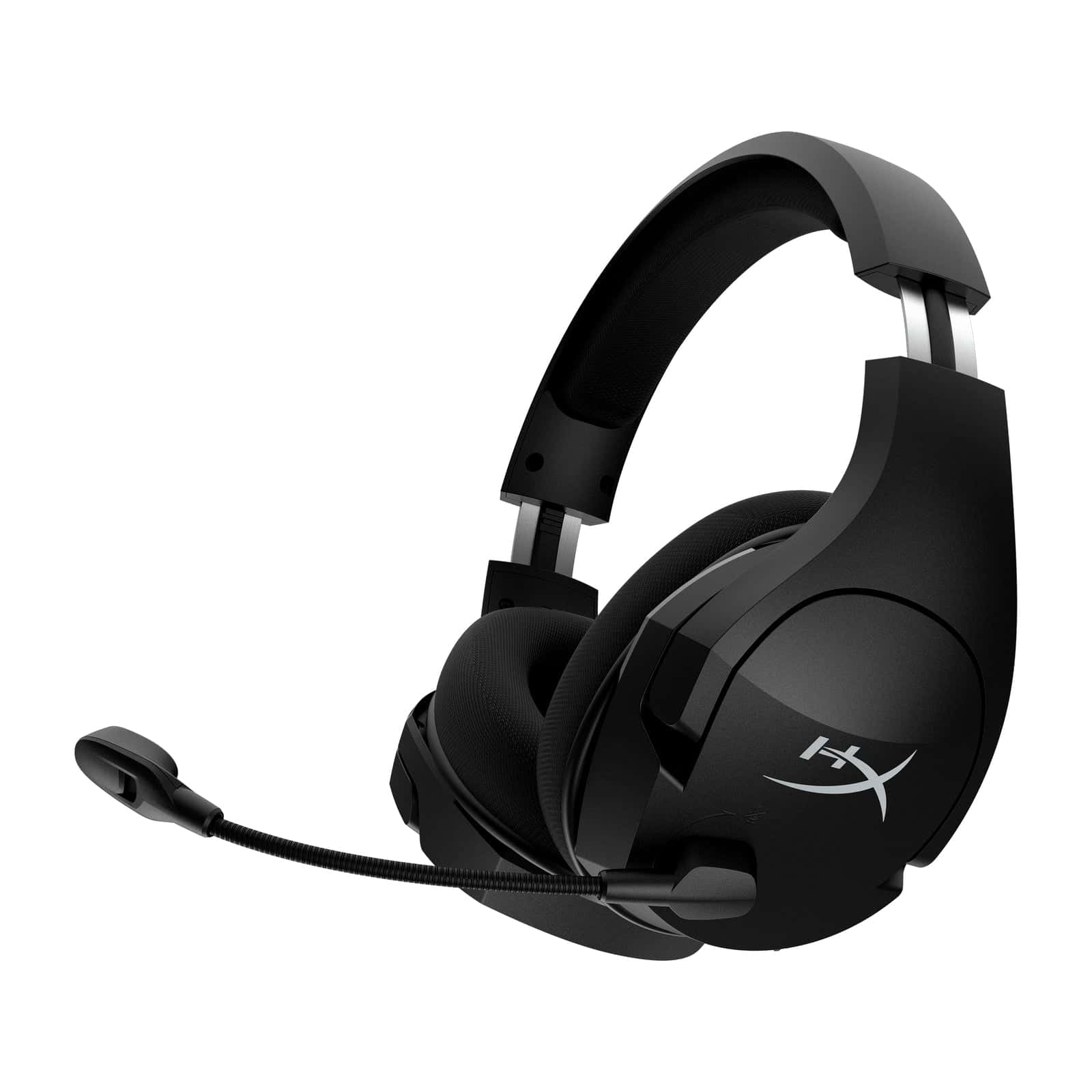The HyperX Cloud Stinger headset offers gamers an affordable audio solution. But like any tech device it can have issues. Common problems include microphone malfunctions no sound output and connectivity troubles. These can often be fixed with basic troubleshooting steps.
Resolving HyperX Cloud Stinger problems is usually quick and easy. You may need to adjust settings on your device or update drivers. Sometimes a simple restart of your computer or console will do the trick. For more complex issues HyperX provides customer support to help.
This guide will walk you through fixes for the most frequent HyperX Cloud Stinger headset issues. We’ll cover mic problems sound output troubles and connection difficulties. You’ll learn how to adjust audio settings and check for hardware faults. By the end you’ll be back to enjoying crisp clear audio in your games.
| Issue | Possible Cause | Quick Fix |
|---|---|---|
| No mic input | Incorrect settings | Check device audio settings |
| No sound output | Loose connection | Ensure cables are fully plugged in |
| Wireless connectivity issues | Low battery | Charge headset or replace batteries |
Troubleshooting Your HyperX Cloud Stinger Headset
The HyperX Cloud Stinger is a popular gaming headset known for its comfort and affordability. But like any tech, it can sometimes run into problems. Here’s a guide to troubleshoot common issues:
1. No Sound or Low Volume
- Connection: Make sure the headset is properly plugged into the correct port. For PC, use the included splitter cable for separate mic and headphone jacks.
- Volume Controls: Check the volume wheel on the headset itself, as well as the volume controls in your operating system and the application you’re using.
- Mute: Ensure the microphone isn’t muted by accidentally flipping it up.
- Device Settings: Go to your audio settings and make sure the HyperX Cloud Stinger is selected as the default playback device.
2. Microphone Not Working
- Mute: Again, check if the microphone is muted by flipping it up.
- Connection: Verify the microphone plug is fully inserted into the correct jack (usually pink).
- Permissions: Make sure the microphone is enabled and that apps have permission to use it in your operating system’s privacy settings.
- Levels: Adjust microphone levels in your operating system’s sound settings and in any communication apps you’re using.
3. Sound Distortion or Static
- Connection: Check for any damage to the headset cable or connectors.
- Interference: Keep the headset away from other electronic devices that might cause interference.
- Audio Settings: Try adjusting the audio quality settings in your operating system or application.
4. Comfort and Fit Issues
- Adjustability: The Cloud Stinger has an adjustable headband. Make sure it’s properly fitted to your head.
- Earcups: The earcups can rotate. Adjust them for a comfortable position.
5. Still Having Problems?
- Driver Updates: Check the HyperX website for any driver updates for your headset.
- Contact Support: If none of the above solutions work, contact HyperX support for further assistance.
Tips for Optimal Performance
- Proper Storage: When not in use, store your headset in a safe place to prevent damage.
- Cleaning: Regularly clean the earcups and microphone with a soft, dry cloth.
- Avoid Excessive Volume: Listening at high volumes for extended periods can damage your hearing.
By following these troubleshooting tips and taking good care of your headset, you can ensure that your HyperX Cloud Stinger provides you with an excellent audio experience for gaming and more.
Getting Started with Your HyperX Cloud Stinger
The HyperX Cloud Stinger is a versatile gaming headset that offers comfort and quality sound. This guide will help you set up and use your new headset effectively.
Understanding Your Headset
The HyperX Cloud Stinger features a lightweight design at just 275 grams. Its ear cups rotate 90 degrees for a better fit. The headset has a volume slider on the right ear cup for easy adjustments.
The microphone is flexible and can be muted by flipping it up. This feature allows quick transitions between gaming and other activities.
The headset works with multiple platforms including PC, Xbox Series, and Nintendo Switch. Its 50mm drivers deliver clear audio for an immersive gaming experience.
Initial Setup and Configuration
To start using your HyperX Cloud Stinger, follow these steps:
- Connect the headset to your device
- Adjust the headband for a comfortable fit
- Position the microphone near your mouth
- Test the audio and microphone in your device settings
For PC users:
- Go to Settings > Devices > Audio Devices
- Set Input Device to HyperX Cloud Stinger
- Set Output Device to HyperX Cloud Stinger
- Choose “All Audio” for Output to Headphones
For console users, plug the headset into your controller’s 3.5mm jack. The headset should work automatically.
| Feature | Description |
|---|---|
| Weight | 275 grams |
| Drivers | 50mm |
| Platforms | PC, Xbox Series, Nintendo Switch |
| Volume Control | On-ear slider |
| Microphone | Flip-to-mute |
Remember to update your device drivers regularly for optimal performance. This ensures compatibility with Windows 11 and other operating systems.
Troubleshooting Microphone Issues
Microphone problems with the HyperX Cloud Stinger can often be resolved through simple adjustments. These issues may stem from incorrect settings or connection problems.
Resolving HyperX Cloud Stinger Mic Not Working
Check the physical connection of your HyperX Cloud Stinger headset. Ensure the audio jack is fully inserted into the correct port on your device. If using a splitter cable, verify it’s properly connected.
Rotate the microphone downwards. The Cloud Stinger mic mutes when positioned vertically. Confirm the mic isn’t accidentally muted.
Inspect the cable for any visible damage. Bent or frayed wires can cause mic failure. Try the headset on another device to determine if the issue is with the headset or your computer.
Update your audio drivers. Outdated or corrupted drivers often cause mic problems. Visit your computer manufacturer’s website or use Windows Update to get the latest drivers.
Adjusting Microphone Settings in Windows
Open the Windows Sound Settings by right-clicking the speaker icon in your taskbar. Select “Open Sound settings” from the menu.
Under the “Input” section, choose your HyperX Cloud Stinger from the dropdown menu. If it’s not listed, try unplugging and replugging the headset.
Click on “Device properties” and ensure the microphone isn’t muted. Adjust the volume slider if needed.
Test the microphone by speaking into it. The input level bar should move as you talk. If it doesn’t, try increasing the mic boost in the “Additional device properties” settings.
| Setting | Location | Action |
|---|---|---|
| Mic Selection | Sound Settings > Input | Choose HyperX Cloud Stinger |
| Volume | Device properties | Adjust slider |
| Mic Boost | Additional device properties | Increase if needed |
Ensuring Proper Microphone Access
Some apps require explicit permission to use your microphone. To manage these settings:
- Open Windows Settings
- Click on “Privacy”
- Select “Microphone” from the left sidebar
Ensure “Allow apps to access your microphone” is turned on. Below this, you’ll see a list of apps. Enable microphone access for the specific apps you’re using.
For games, check the in-game audio settings. Some games have separate controls for mic input. Adjust these as needed to get your HyperX Cloud Stinger mic working properly.
If you’ve tried these steps and still face issues, contact HyperX support. They can provide further troubleshooting or arrange a replacement if necessary.
Audio Output and Quality Problems
The HyperX Cloud Stinger can face several audio issues. These range from low sound output to poor quality. Fixing these problems often involves adjusting settings and updating software.
Optimizing Sound Settings for Gaming and Chat
To get the best audio from your HyperX Cloud Stinger, start by checking your device’s sound settings. On Windows, right-click the speaker icon and select “Open Sound settings”. Ensure the headset is set as your default output device.
For gaming, enable any available enhancements like virtual surround sound. This can improve directional audio cues. In your game’s audio settings, adjust the mix between game sounds and chat volume.
Many games offer preset audio profiles. Try these to find one that suits your preferences. If chat audio is unclear, check your Discord or other voice chat app settings. Adjust input and output volumes as needed.
| Setting | Recommendation |
|---|---|
| Game/Chat Balance | 60/40 |
| Surround Sound | On for games, Off for music |
| Equalizer | Bass boost for immersion |
Updating Audio Drivers and Software
Outdated drivers can cause audio problems with your HyperX Cloud Stinger. To update, open Device Manager on your PC. Find your headset under “Audio inputs and outputs”. Right-click and select “Update driver”.
Check for Windows updates too. These often include audio improvements. Go to Settings > Update & Security > Windows Update.
If you’re using the headset with a console, ensure your system software is up to date. For PlayStation or Xbox, check their respective system settings for updates.
Some issues may stem from conflicting background apps. Close unnecessary programs, especially those that might access your audio devices.
Preventing Hearing Damage and Ensuring Safety
While trying to solve audio problems, don’t overlook your hearing health. Start by setting your device’s volume to 50%. Gradually increase it to a comfortable level.
Use the 60/60 rule: listen at 60% volume for no more than 60 minutes at a time. Take regular breaks to rest your ears.
Enable any available volume limiting features on your device. Many smartphones and computers have this option in their sound settings.
If you’re experiencing persistent discomfort or ringing in your ears after using the headset, lower the volume. Consider consulting an audiologist if symptoms persist.
Remember, no game or chat is worth damaging your hearing. Prioritize long-term hearing health over short-term audio satisfaction.
Support and Warranty Service
HyperX provides comprehensive support and warranty options for Cloud Stinger headsets. You can get help with technical issues and learn about coverage for your device.
Contacting HyperX Support
HyperX offers multiple ways to get help with your Cloud Stinger headset. You can chat with an expert for troubleshooting or to open an RMA request.
Phone support is also available:
- Customer Service: +1 (888) 484-9335 (Mon-Fri, 7 AM – 5 PM PT)
- Technical Support: +1 (844) 464-9737 (Mon-Fri, 7 AM – 5 PM PT)
For the HyperX Cloud Stinger 2 Wireless, you may need specific assistance. Contact support if you have issues with wireless connectivity or audio quality.
Understanding Warranty for Your Headset
HyperX Cloud Stinger headsets come with a limited warranty. The warranty period is typically two years from the date of purchase.
Key points about the warranty:
- Covers defects in materials and workmanship
- Does not cover normal wear and tear or accidental damage
- You may need to provide proof of purchase
To claim warranty service, contact HyperX support. They will guide you through the process and may ask you to return the product for repair or replacement.
| Warranty Coverage | Details |
|---|---|
| Duration | 2 years (typical) |
| What’s Covered | Manufacturing defects |
| What’s Not Covered | Accidental damage, normal wear |
| Required | Proof of purchase |
Remember to keep your receipt or order confirmation for warranty claims.
Frequently Asked Questions
HyperX Cloud Stinger users may encounter various issues across different platforms. These questions address common problems and provide troubleshooting steps for microphone detection, connectivity, audio problems, and driver updates.
How can I fix a microphone detection issue with my HyperX Cloud Stinger?
Check your device’s audio settings to ensure the microphone is selected as the input device. Verify that the microphone is not muted on the headset itself.
Try unplugging and reconnecting the headset. If using a splitter cable, make sure it’s securely connected.
What are the steps to troubleshoot a HyperX Cloud Stinger not working on Xbox One?
Ensure the headset is firmly plugged into the controller’s 3.5mm jack. Check if the controller needs a firmware update through the Xbox settings menu.
Adjust the audio settings in the Xbox menu to match your headset configuration. Test with a different controller to rule out controller-specific issues.
Why is my HyperX Cloud Stinger headset not functioning on a PS5, and how can I resolve it?
Verify that the headset is fully inserted into the DualSense controller’s audio jack. Navigate to the PS5 sound settings and select the correct output device.
If issues persist, try resetting the controller by pressing the small reset button on the back. Test the headset on another device to isolate the problem.
How do I troubleshoot audio problems with the HyperX Cloud Stinger on an Xbox Series X?
Check the Xbox audio settings to ensure the headset is recognized. Adjust the balance between game and chat audio if needed.
Update your Xbox controller firmware through the system settings. If problems continue, test the headset on a different device to determine if it’s a console-specific issue.
What is the process for updating HyperX Cloud Stinger drivers on Windows 10?
HyperX Cloud Stinger doesn’t require specific drivers. Windows 10 should automatically install generic audio drivers.
To ensure your system is up-to-date, go to Settings > Update & Security > Windows Update. Check for and install any available updates.
What could be causing my HyperX headphones to stop working, and how can it be fixed?
Check the physical connections, ensuring the audio jack is fully inserted. Inspect the cable for any damage or fraying.
Test the headset on multiple devices to determine if it’s a device-specific issue. If problems persist across devices, contact HyperX support for potential warranty claims or replacement options.
| Issue | Quick Fix |
|---|---|
| No audio | Check connections, adjust volume |
| Microphone not working | Ensure it’s not muted, check input settings |
| One side not working | Check balance settings, inspect for cable damage |
| Distorted sound | Lower volume, check for driver updates |
| Comfort issues | Adjust headband, rotate ear cups |







